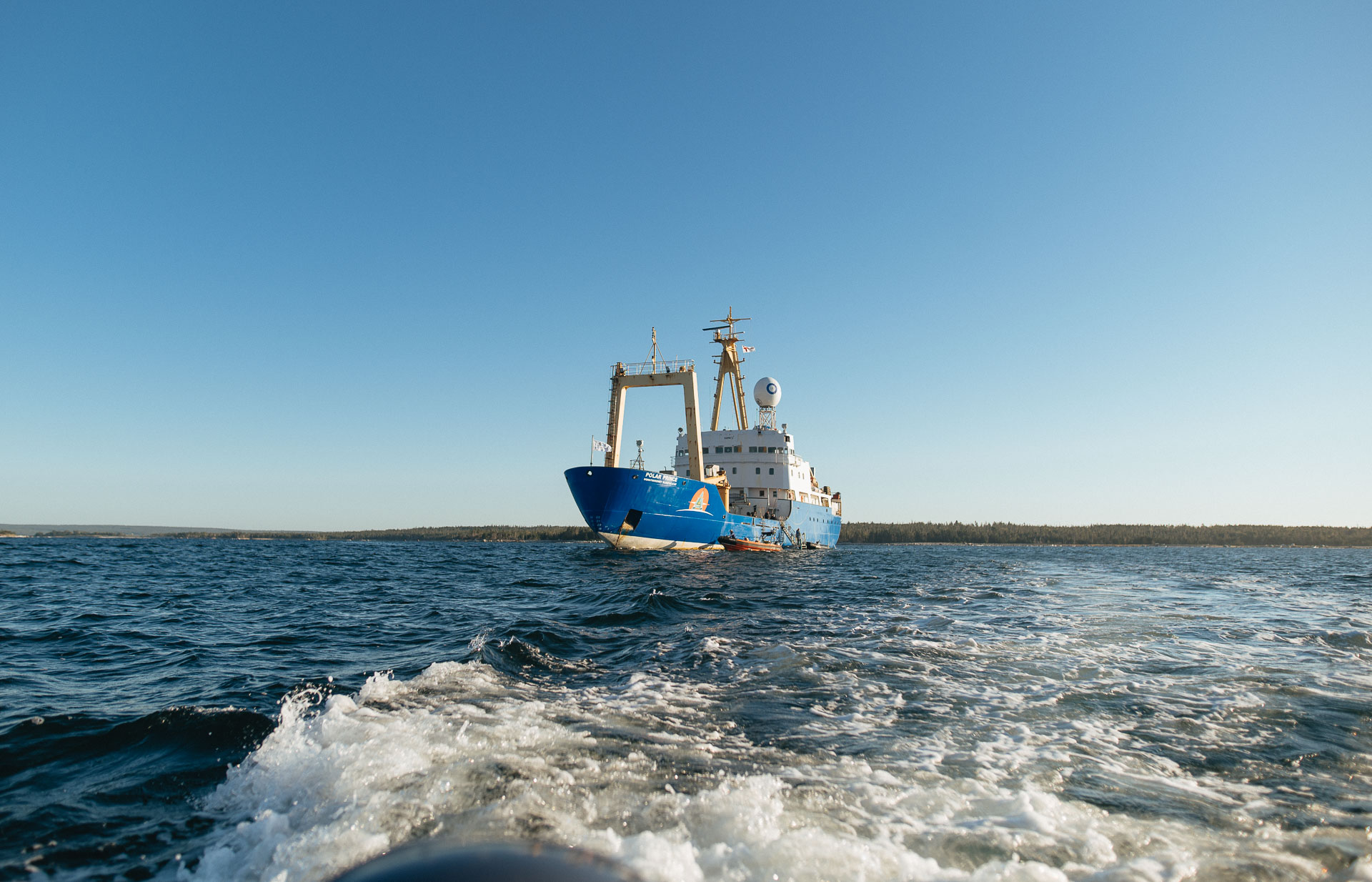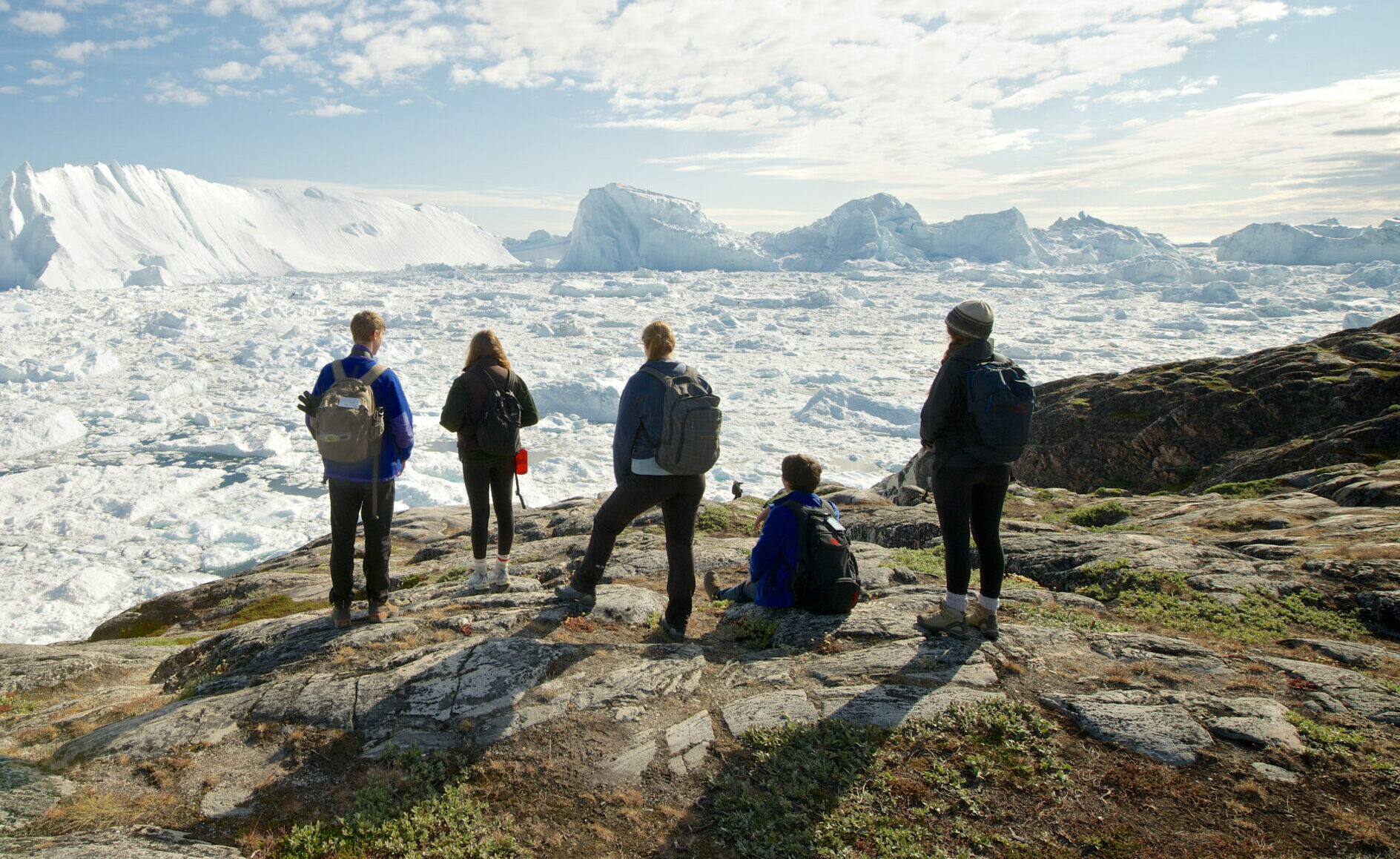Ocean Conservation Expedition: September 11-12
As we continued our journey the various bird, fish, mammal and plant species we spotted at Seal Island and Machias Seal Island, showed just how diverse this area can be. These two islands are important sites for migratory birds. There are some 330 species of birds identified on the 880 acres of land. The Canadian Wildlife Service team on the expedition said bird data can be matched with oceanographic data to understand which areas may need protection.
On Seal Island, we also met local community members. They greeted us, shared stories, and even some scallops with our team! We got to learn about the history of the Island, the two original families that inhabited it, the origin of Nova Scotia’s oldest wooden lighthouse, and the importance of Irish Moss harvesting. The carrageenan inside Irish moss found here can be used as a vegan substitute for gelatin, as well as a general emulsifier, so it can be found in everything from ice cream to infant formula!

After an afternoon of exploring the island we headed back in the ship and gathered in the hanger where we enjoyed a poetry reading by Shannon Webb-Campbell and had an in-depth conversation about ocean conservation and the importance of marine protected areas.
The next morning as we made our way to Machias Seal Island we made a quick stop at sea to purchase a haul of fresh caught lobster from some local fishermen for the expedition team to enjoy that night! When we arrived at Machias Seal Island we took a zodiac ride to shore and were greeted by a landing path completely overgrown in seaweed.

Machias Seal Island has been a disputed island between the U.S. and Canada since 1812. Not only is it one of the most important seabird nesting colonies in the Gulf of Maine, in recent years, due to climate change, the waters around it has seen more lobster, as they move north due to warming waters. Just a few of the species we saw include a peregrine falcon, black-backed seagulls, and a whimbrel.
“People are always looking for a whimbrel, and here’s one 15-20 metres in front of us.” – Rick Ludkin

As part of this expedition, we’re helping the Bedford Institute of Oceanography collect data by deploying drifters. Made by ocean technology companies in Nova Scotia, they provide data on ocean currents, temperature, and salinity, among other parameters. While in the middle of deploying these drifters a pod of minke whales decided to pay us a visit. These whales are the smallest of the baleen whales!

The beauty and biodiversity of this remote area were on full display. We saw seals, minke whales, various types of fishes, as well as a diversity of plant life. Boris Worm of Dalhousie University has wanted to come to this island for over 20 years. He has spent his career studying the Bay of Fundy, but the remoteness of this island made it hard to get to. “It’s amazing. It’s so peaceful here,” he said.
“The outer Bay of Fundy is one of the most diverse and productive places we have in Canada, it’s also one of the most rapidly changing in terms of the rising temperature and the effects of climate change, which are faster here than in 99% of the ocean. So we’re in the top one percentile. And this makes this area very special, almost like a laboratory to understand the effects of climate change on our wildlife, and what we can do to better protect it in the face of climate change,” – Boris Worm

Getting to know the flora, fauna and coastal communities in the Bay of Fundy, it’s hard not to think about the health of their home. During our group conversations in the hangar, it’s clear that successful conservation efforts can happen. But it needs collaboration across sectors, and with local communities.
View the full expedition page here.
View the full photo gallery from this portion of the expedition here.





